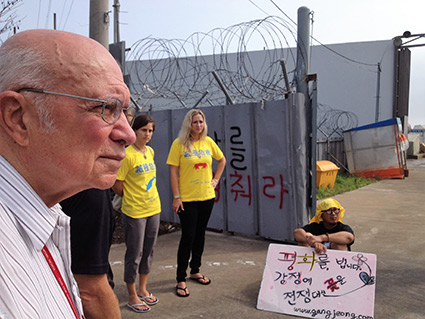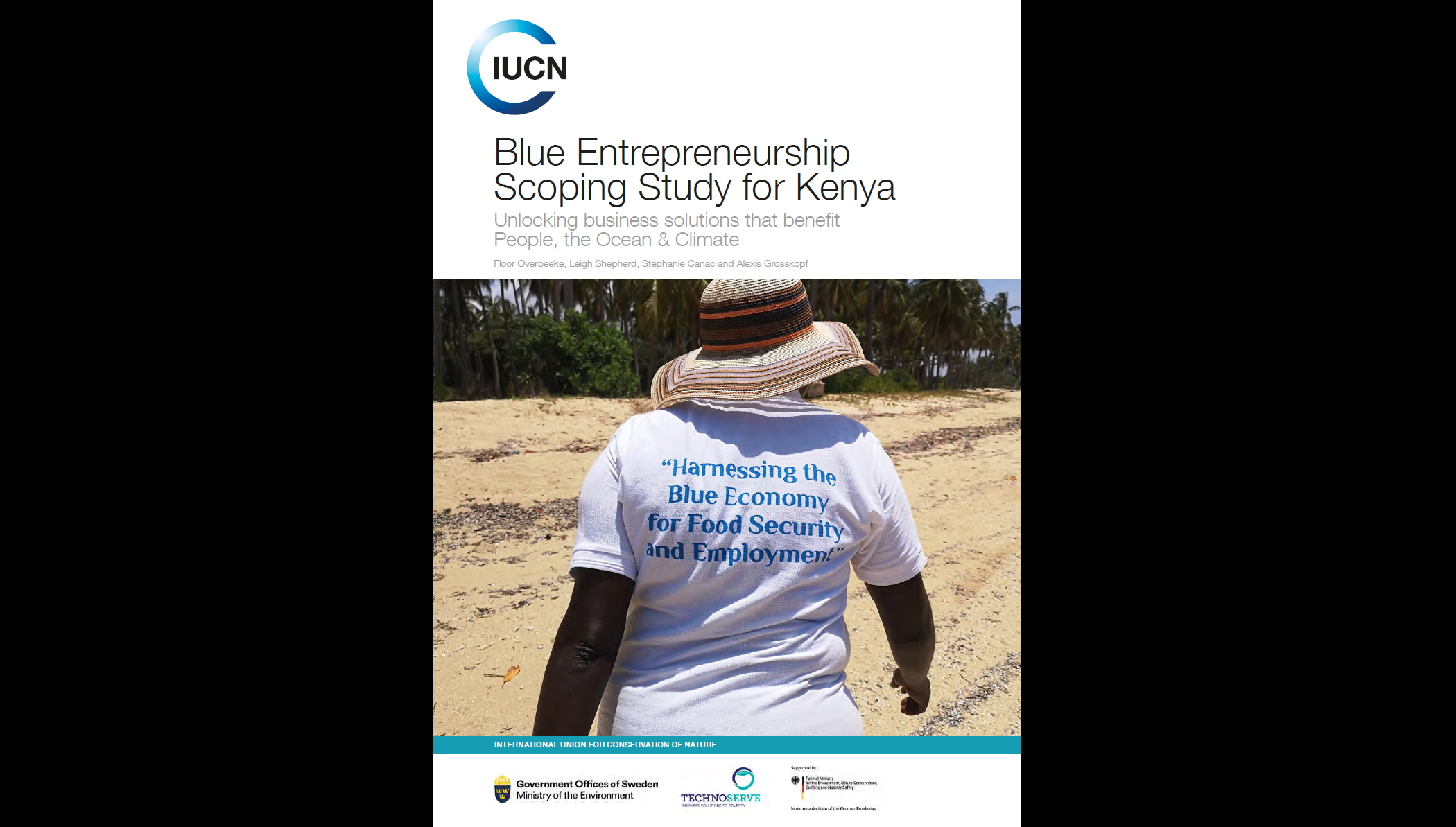WCEL Pays Tribute to George Rabb
George B. Rabb, one of the most highly regarded leaders of the world conservation movement, passed away in Chicago on July 27.

Photo: Kathryn Gwiazdon
by J. Ronald Engel
Chair IUCN Ethics Working Group, 1984 - 1995
Chair, WCEL Ethics Specialist Group, 1995 – 2005
“His straightforward, uncomplicated commitment to saving the world’s species and natural places,” in the words of former Species Survival Commission chair Simon Stuart, and the ways human communities can live in sustainable relationships to them, spanned the world and had positive impacts on virtually every phase of conservation biology, from research to politics, from psychology and education to the institutional leadership of IUCN and related international organizations.
Former WCEL chairs Nick Robinson and Parvez Hassan paid tribute to the extraordinary personal impact Rabb had throughout the world conservation movement. “IUCN and the world of conservation have lost a rare and wondrous hero. His leadership for species was cut from the same cloth as was Wolfgang Burhenne's for law. . . I celebrate all that George accomplished in his life and miss his clear moral vision, his ever on-point irony and barbs bringing us all down to earth, and his good cheer and friendship. I count it a singular value of my life to have known, worked and shared human affection with George.” (Robinson)
“I join Nick's sentiments and tribute to George Rabb; I had the pleasure and privilege of working with George when he headed the IUCN species commission and I the law commission; he brought much wisdom and experience to the joint meetings of the chairs of the commissions and we always looked forward to his wit and humour to our otherwise business agendas.” (Hassan)
Rabb was especially supportive of the work and membership of the WCEL Ethics Specialist Group (ESG), beginning with its intercommissional predecessor the IUCN Ethics Working Group in the 1980s, and continuing through his position as a board member of the Center for Humans and Nature, a recent sponsor of the ESG, to the ESG’s Biosphere Ethics Initiative, overwhelmingly endorsed by the World Conservation Congress in 2012, and the current efforts by ESG chair, Klaus Bosselmann, to establish a World Environment Organization charged with trusteeship of the Earth’s ecological integrity and biodiversity.
George’s contributions were ethically substantive and challenging. He was well known for his impassioned pleas for an “ethics of care” for other species and humans vulnerable to environmental destruction and for the integrity of the global commons; his repeated insistence that “nature” be given a seat at the table of human decision-making; and for his probing criticisms of the reigning societal consensus, even when that took the form of the visionary 2000 Earth Charter to which many WCEL members contributed. By what moral authority, he kept asking, does the Earth Charter claim in principle 2.a. that anyone has a “right” to ownership of the Earth? George’s capacity for mentoring new generations of ethically dedicated conservationists was renowned, as was his capacity for cogent advice and personal support for those of us who were privileged to enjoy his friendship.
Dr. George Rabb: I see you, and I will stand for you
by Kathryn Gwiazdon
Esq.Executive Director, Center for Environmental Ethics and Law
Deputy Chair, Ethics Specialist Group, IUCN WCEL (2008-2012)
Two nights ago, as I walked to my home, a small, brilliant green tree frog quite literally greeted me at my front door. I had never seen this frog before, let alone at my front door. He dashed up the front, and then jumped across to the side. I didn’t move, but paused and said, “I see you.”
We all connect to people in different ways, for different purposes, throughout the many stages of our very different lives. And then there is that rare person that speaks to your soul, to your past, your present, and your hopes for the future. They help anchor you, but they also raise that anchor, and help guide you strongly and determinedly forward, sometimes through calm seas, and sometimes through the worst storms.
George Rabb will have a forever impact on the Ethics Specialist Group (ESG) of the IUCN WCEL. He fought for the invisible creatures, the quiet movements, the most vulnerable and voiceless among us. He fought to make the invisible visible, the quiet loud, and to give voices to the vulnerable. He didn’t ask much of others, only that we “give a damn.” He connected some of the most powerful ideas among us, to the most simple and straightforward principles: conservation is caring; leave no children inside; and love – love life (biophilia), love one another (sociophilia), love your homes, your place (locophilia)… and I talked him into the final love: love yourself (egophilia). He thought there was a little too much of that last one! But you cannot love other people, places, and things, unless you also have, at least a little, love for yourself.
The Biosphere Ethics Initiative is a soft law program of the ESG that seeks to highlight and advance principles of environmental ethics in real life, law, and policy. George’s support of the BEI is shown throughout its work, and networks. His passion for amphibians helped us unpack important principles about small, oft-times invisible, and most-times vulnerable, species. His unwavering care and hope for the future informed how we cultivate care, and the importance of play in and around nature – for children and adults. However, he was also adamant that we not be blind to the threats to ethical action, care, and conservation. If George stood for anything, he stood for acting courageously. If we make statements, stand by them. If we stand for the good, be the good. This spirit will always be with me.
The last time that I was together with George was at the IUCN Congress in 2012 in Jeju, South Korea. The ESG was advancing a motion to protect the conservation, culture, and people of Gangjeong Village, a very small community just miles away from the conference venue. Their entire way of life – in harmony with nature – was under direct threat due to the development of a government military base. It was a true struggle throughout the entire process, raising up the voice of these people against some of the most powerful voices on earth.
At one point, the villagers held a peaceful protest on the stage before the full Assembly, rolling out their banners. Slowly, leaders of the indigenous groups came forward, holding hands with them in solidarity. George turned to me and said, “Isn’t this wonderful?!” with his amazed and happy laugh that those who knew him know well. These people were showing IUCN what IUCN should be: courage, and care, for conservation.
George came up to me after the motion had failed, hugged me, his eyes with tears. Like me, he had met the villagers, he had seen their sacred waters, he had watched as they stood in front of the construction trucks, and he had witnessed these villagers, these courageous few, being physically carried away by more than 200 police at a time. These moments are forever etched in my mind.
Courage. To care. To give a damn. That was George to me, and that will be a forever foundation to the work and the people of the Biosphere Ethics Initiative.
Last October, Toughie, the last remaining Ecnomiohyla rabborum, commonly known as Rabbs' fringe-limbed tree frog (named after George and his wife, Mary), passed into extinction. I wanted to honor this little frog in some way, and what he symbolized for his namesakes, and for conservation. I wanted to highlight the amphibian crisis through an ethical lens. And so, I spoke with George.
Like most amphibians, Toughie was strong, but fragile. And like most amphibians, his loss is a symbol of something so much bigger – about species loss, about human responsibility, about our ethics towards others. Also, and what most people do not know, is that with this species, the father would take care of the children, literally having them eat from his back in order to survive.
As The Tale of Toughie: Ethics and the Amphibian Crisis is born, George has now passed. But this story will continue, this little frog, this single man – and all the big that it, and he, meant – will be remembered, and these memories will be translated into action. Courageous, determined action.
Everyone who knew George knows of his tiny pin that he would wear on his jacket; indeed, I never saw him without it. It was a small, brilliant green tree frog. And so I say to that small, brilliant green tree frog at my front door, “I see you, and I will stand for you.”
The views expressed in these testimonies are those of the authors and do not necessarily reflect those of the IUCN Secretariat or the World Commission on Environmental Law (WCEL).



